Yoshino Cherry Tree
- June 8, 2023
- 0 comment

Name, Botanical Name, and Family
Commonly referred to as the Yoshino Cherry, its botanical name is Prunus × yedoensis. This tree is a member of the Rosaceae family, which includes other beloved plants like roses, apples, and almonds.
Lumber
It is primarily used for specialty woodworking projects due to its unique aesthetic properties. The wood is light to medium in weight, has a fine texture, and comes in colors ranging from pale pink to light brown. Its limited availability makes it less commonly used compared to other hardwoods.
Read more about Yoshino Cherry Lumber
Interesting Facts

The Yoshino Cherry tree occupies a special place in history and horticulture, embodying the spirit of international friendship and the ephemeral beauty of spring. Its story is tied to one of the most celebrated annual events in the United States – the National Cherry Blossom Festival in Washington D.C.
In 1912, as a gesture of goodwill and friendship, Japan gifted more than 3000 Yoshino Cherry trees to the United States. This significant diplomatic gesture was not just about extending friendship but was also an appreciation of nature and aesthetics that both nations shared.
First Lady Helen Herron Taft and Viscountess Chinda, wife of the Japanese ambassador, planted the first two trees in West Potomac Park. These trees, carefully nurtured, have since grown and multiplied, now adorning the Tidal Basin with their splendor. Every year, these trees erupt into a dazzling display of white and pale pink blossoms, signifying the arrival of spring and symbolizing the enduring friendship between Japan and the United States.
Every spring, the National Cherry Blossom Festival commemorates this historic event. Over four weeks, the festival hosts a range of events celebrating traditional and contemporary Japanese culture. The high point of the festival is when the Yoshino Cherry trees reach their peak bloom, painting the city with their breathtakingly beautiful blossoms. These delicate flowers, while short-lived, draw visitors from around the globe to witness their spectacular bloom – a once-a-year event that fills the city with a sense of awe and wonder.
Interestingly, the peak bloom date, the day when 70 percent of the blossoms are open, varies each year depending on weather conditions. This makes each bloom a unique spectacle in itself, further adding to the charm and allure of these remarkable trees.
Thus, the Yoshino Cherry is not just a tree. It is a symbol of peace, friendship, and a herald of spring. Its blossoms, though fleeting, leave an enduring impression, making it an unforgettable icon of natural beauty and international camaraderie. The annual blooming of these trees serves as a reminder of the transient nature of life, urging us to appreciate and celebrate each moment.
Plant Type
The Yoshino Cherry is a deciduous tree, meaning it sheds its leaves annually. It’s well-known for its stunning display of delicate blossoms during spring, thus classified as a flowering tree.
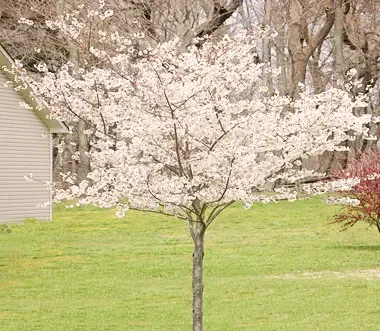
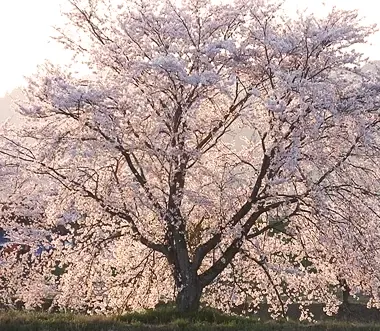
Mature Size
A mature Yoshino Cherry can reach heights between 30-50 feet with an almost equal spread. The beautiful branches often arch downwards, providing a broad, cascading canopy. This tree possesses a medium to fast growth rate, adding 13 to 24 inches annually.
Soil and Sun Preference
The Yoshino Cherry tree is not excessively particular about the soil’s pH, but it thrives in slightly acidic to neutral conditions. While it can tolerate various soil types, it prefers moist, well-drained soil that is enriched with organic matter to support its optimal growth. For sunlight exposure, the Yoshino Cherry tree flourishes in full sun, although it can still tolerate partial shade.

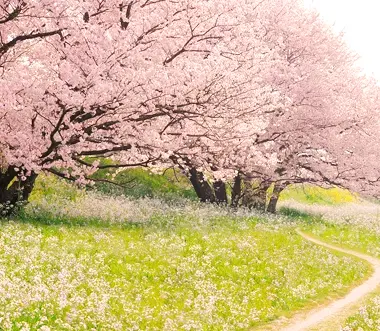
Characteristics and Invasive Nature
The Yoshino Cherry tree possesses a captivating combination of characteristics that make it truly remarkable. From its gracefully spreading canopy to its awe-inspiring spring blossoms, this tree knows how to command attention. As the seasons change, it reveals yet another facet of its beauty with its captivating fall foliage, showcasing vibrant hues that paint the landscape with shades of gold and crimson. However, it’s important to note that in certain regions, the Yoshino Cherry can exhibit an invasive nature, self-seeding and potentially disrupting local ecosystems. Before planting, it is essential to consult and adhere to local guidelines and regulations to ensure responsible cultivation practices.
Hardiness Zones
The Yoshino Cherry is adaptable to USDA hardiness zones 5-8, where the climate ranges from moderately cold winters to hot summers.
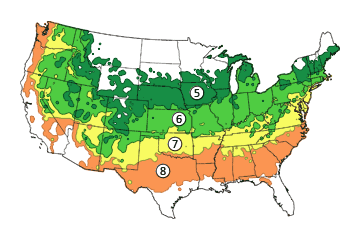
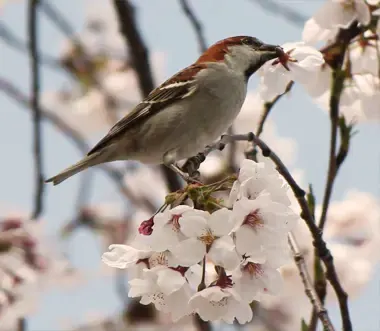
Wildlife Value
This tree is a true wildlife attractor. Birds and butterflies are particularly drawn to its blossoms and the small cherries it produces.
Varieties
The ‘Akebono’ variety is a popular selection with pink blossoms. ‘Shidare Yoshino’ is a weeping form with cascading branches.
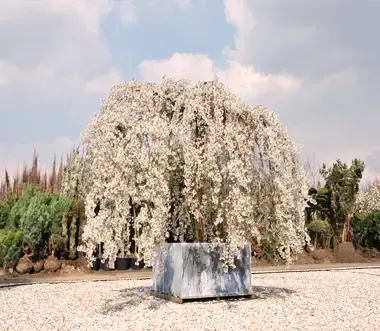

Common Pests & Diseases
The Yoshino Cherry tree is susceptible to a few common pests and diseases that can affect its health and appearance. It is important for gardeners and caretakers to be aware of these potential issues and take appropriate measures to prevent or address them.
Pests:
- Aphids: These small insects feed on the sap of the tree’s leaves and shoots, causing curling, yellowing, and distorted growth. Regular inspection and use of insecticidal soaps or natural predators can help control aphid populations.
- Scales: Scale insects can attach themselves to the branches and leaves of the Yoshino Cherry tree, sucking sap and causing stunted growth and yellowing. Pruning affected branches and applying horticultural oil or insecticidal soap can help manage scale infestations.
- Tent Caterpillars: These caterpillars create unsightly tents in the branches of the tree, where they feed on the foliage. Manual removal of the tents and application of biological control agents or insecticides can help control tent caterpillar populations.
Diseases:
- Powdery Mildew: This fungal disease appears as a white powdery coating on the leaves, affecting the tree’s aesthetics and potentially reducing its vigor. Proper air circulation, avoiding overhead watering, and application of fungicides can help prevent or manage powdery mildew.
- Leaf Spot: Leaf spot diseases cause dark or discolored spots on the leaves, leading to premature leaf drop. Raking and disposing of fallen leaves, proper watering techniques, and application of fungicides can help minimize leaf spot infections.
- Verticillium Wilt: This soil-borne fungal disease can cause wilting, yellowing, and eventual death of the Yoshino Cherry tree. There is no cure for Verticillium wilt, so prevention is crucial. Planting disease-resistant varieties, improving soil drainage, and practicing good sanitation measures can help reduce the risk of infection.
Pruning and Propagating
are important aspects of caring for Yoshino Cherry trees. Pruning should ideally be done in late summer or early fall, during the tree’s dormant period, to minimize disease transmission and achieve desired shaping. When pruning, it is crucial to set clear objectives, such as removing dead branches, improving air circulation, or managing size. Propagation of Yoshino Cherry trees is commonly done through grafting or budding, as growing from seeds can be challenging due to the hybrid nature. Grafting involves joining a scion from a desired tree onto a compatible rootstock, ensuring desired traits are inherited. Budding entails attaching a bud to a rootstock. Both methods require expertise. Proper pruning and propagation techniques contribute to the health and preservation of Yoshino Cherry trees’ characteristics.
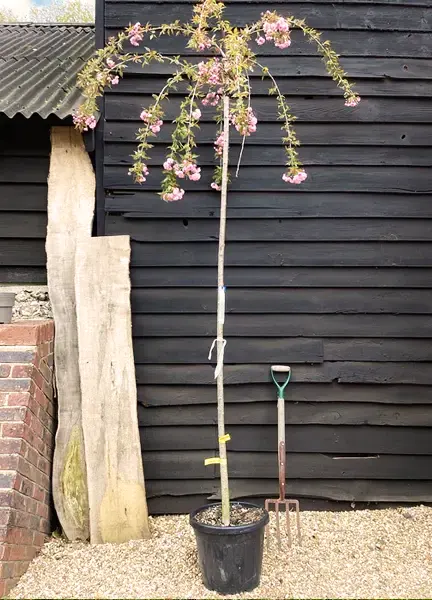
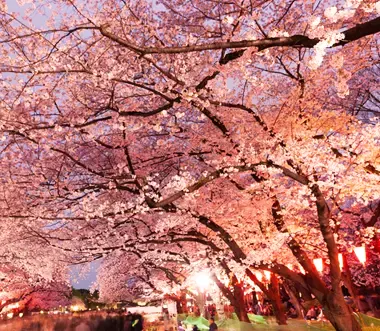
Benefits and Disadvantages
The Yoshino Cherry tree offers a range of benefits beyond its aesthetic appeal. Besides being visually pleasing, it serves as a shade tree, providing cooling relief during hot summers. Moreover, its ornamental charm can enhance property value, adding to the overall desirability of a landscape. However, it is important to consider the disadvantages associated with this tree. Yoshino Cherry trees typically have a relatively short lifespan, averaging around 15-20 years. Additionally, they are prone to various diseases and pests, requiring vigilant care and management to ensure their longevity and health.
Attributes
The Yoshino Cherry tree boasts an array of attractive attributes throughout the seasons. Renowned for its spectacular spring blossoms, the tree also showcases glossy green leaves during the summer months. As autumn arrives, these leaves transform into a stunning blend of yellow and bronze, adding vibrant hues to the landscape. Even in winter, the Yoshino Cherry stands out with its smooth, gray bark, lending a touch of elegance and visual appeal to the surroundings year-round.

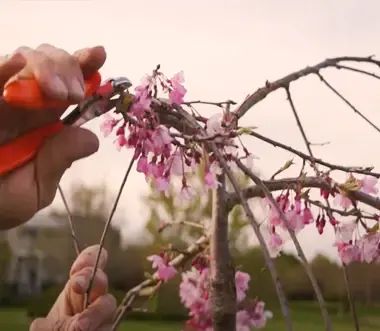
Care
Yoshino Cherry requires relatively little care once established. However, proper watering, fertilization, and occasional pruning help it to maintain its health and beauty.
Edibility
While the Yoshino Cherry tree produces small cherries, they are typically not consumed due to their bitter taste. The cherries may be visually appealing, but their flavor does not meet the expectations of palatability. As a result, they are not commonly sought after for culinary purposes. Instead, the Yoshino Cherry is primarily appreciated for its ornamental value, captivating onlookers with its stunning blooms, and adding a touch of elegance to gardens and landscapes. The focus of cultivating this tree lies in its aesthetic appeal rather than its edibility.

Yoshino Cherry Tree Pros and Cons
| Pros | Cons |
| Stunning spring blossoms: Showy, fragrant, and abundant, the pink flowers create a breathtaking display. | Short lifespan: Yoshino Cherry trees typically live 15-20 years in urban environments. |
| Vase-shaped canopy: Provides a graceful and elegant presence in the landscape. | Susceptible to diseases and pests: Requires vigilant care to maintain its health. |
| Glossy green leaves: Offer a pleasing contrast to the pink blooms and add color throughout the summer. | Brittle branches: Prone to breaking under heavy snow or ice. |
| Fast-growing: Reaches its mature size quickly, providing shade and beauty sooner rather than later. | High maintenance: Needs regular pruning, fertilization, and pest control. |
| Tolerates a variety of soil conditions: Adapts to most well-drained soil types. | Messy: Falling petals and fruit can create a lot of cleanup. |
| Attracts pollinators: Bees, butterflies, and other beneficial insects are drawn to the flowers. | Shallow root system: Can be susceptible to wind damage. |
| Widely available: Easy to find at nurseries and garden centers. | Limited fall color: Leaves turn yellow before dropping, but the display is not very noticeable. |
Frequently Asked Questions
- How big does Yoshino Cherry tree get?
Can reach 20-40 feet tall and 25-35 feet wide. - Where should I plant Yoshino Cherry tree?
Full sun (6+ hours) and well-drained soil. Avoid areas prone to strong winds. - Do Yoshino Cherry trees attract bees?
Yes, the fragrant flowers attract bees, butterflies, and other pollinators. - Are Yoshino Cherry trees deer resistant?
No, deer find them delicious. Consider protective fencing if deer are present. - Do Yoshino cherries like sun or shade?
They thrive in full sun (6+ hours) but tolerate some shade. - Is Yoshino Cherry invasive?
No, it is not considered invasive in most areas. - What is the lifespan of a Yoshino cherry tree?
15-20 years in urban environments, potentially longer in ideal conditions. - What do Yoshino cherry trees look like in the fall?
Leaves turn yellow before dropping, but the display is not very noticeable. - What does a Yoshino Cherry tree look like in summer?
Dense, glossy green foliage provides a vibrant canopy. - What can I plant under Yoshino Cherry tree?
Shade-tolerant plants that can tolerate occasional falling fruit and petals, like ferns, hostas, or impatiens. - Where can I find the Yoshino cherry tree for sale?
You have a few options! Many online retailers like Forestry.com offer a wide selection of Yoshino cherry trees for sale, delivered right to your door. Local nurseries and garden centers often carry them as well, so you can inspect the trees in person before purchasing.

David Murray
Forestry AuthorI'm David Murry, a forestry equipment specialist with a focus on chainsaw operation. With over 13 years of experience, I've honed my skills in operating and maintaining a wide range of machinery, from chainsaws to log splitters. My passion for the outdoors and commitment to sustainable forestry drive my work, which emphasizes safety, efficiency, and staying updated with industry advancements. Additionally, I'm dedicated to sharing my expertise and promoting environmental awareness within the forestry community.


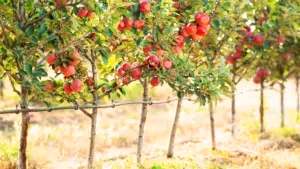
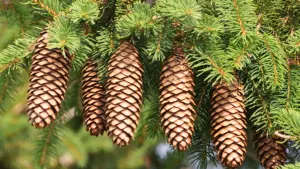

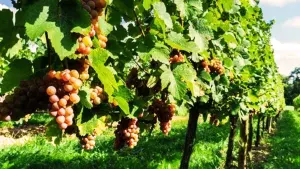

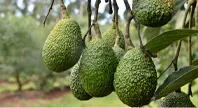

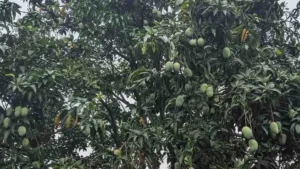
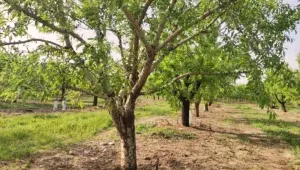
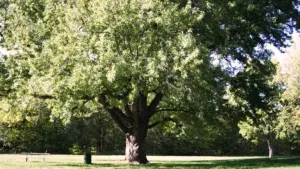
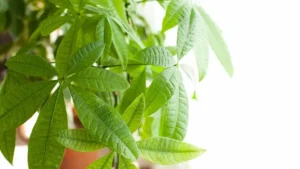
Leave your comment